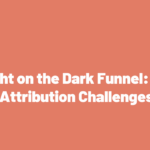Lower funnel channels – branded search, retargeting, affiliate – always look like heroes in your marketing mix. They convert fast, scale cleanly (or so it seems), and look great last-click attribution.
But these channels work because something else made them work first.
If your media mix model doesn’t reflect that causal chain, you’ll end up overinvesting in what’s easy to measure – and underinvesting in what actually is driving demand.
In this article, we’ll break down why lower funnel channels are so tricky to model, and how Recast uses a hierarchical approach to solve for this
Why Lower Funnel Channels Appear to Overperform in MMMs
Lower funnel ROI often looks off-the-charts because these channels are literally capturing buyers at the moment of purchase. But that apparent performance isn’t always what it seems:
First, these channels capture existing demand, not create it.
Think of brand search, for example. It happens because people are searching for your branded keyword. You can increase bids or optimize ads, but what you can’t do is grow the underlying pool of searchers unless more people are already aware of your brand.
Second, in standard media mix models, all channels are treated symmetrically — as if they operate independently and scale the same.
That’s a myth for lower funnel channels. When someone enters your branded query or clicks an affiliate link, it’s a response to earlier brand exposure. Most MMMs don’t account for this upstream causality, so they end up crediting every conversion to these “last-click” channels — even when those conversions wouldn’t have happened if earlier channels hadn’t primed the audience.
Third, the bounded nature of these channels means ROI will plateau.
You can’t endlessly increase spend here because these channels are limited by the pool of people showing intent. If your model treats them like an elastic lever, you’ll overinvest here,.
So, what ends up happening here?
Models over-credit lower funnel channels, undervalue upper funnel investments, and push marketers toward “easy wins” that don’t scale. And you end up optimizing for what’s closest to conversion – not what’s actually driving growth.
Understanding this trap is the first step.. In the next section, we’ll walk through how Recast’s hierarchical modeling approach fixes this exact problem using a system that reflects real-world marketing dynamics.
How Recast Models Lower Funnel Channels to Reflect Real Causality
Step 1: Model Lower Funnel as an Outcome First, Input Second
At Recast, lower funnel channels like branded search and affiliate aren’t treated as standalone levers — they’re seen as consequences of upper funnel activity.
The model first predicts spend in these channels as an outcome of awareness-driving media like TV or display. Only after that predicted spend is calculated does the model treat it as an input that drives conversions.
This helps us not give credit to a channel without asking what caused the spend to exist in the first place.
For example, if branded search goes up after a podcast campaign, the model reflects that causal sequence. This structure lets our customers estimate how much of that branded search performance is actually due to the upper funnel effort — not just the final click.
Step 2: Use DAGs to Structure True Channel Relationships
To make sure the model aligns with reality, Recast starts every engagement by building a directed acyclic graph (DAG). These graphs map the causal structure of the business: awareness leads to intent, which leads to conversion. This upfront exercise forces clarity around what affects what, so the statistical model isn’t left guessing.
By separating cause from effect, Recast avoids treating lower funnel actions — like app store search or affiliate clicks — as independent signals.
Instead, the DAG helps structure them as part of a chain: upper funnel media → intent signals → branded engagement → conversion.
Step 3: Prevent Last-Click Bias by Modeling the Full Funnel
As we’ve discussed, one of the most common failure modes in MMM is last-click bias. Lower funnel channels, because they sit closest to the purchase event, tend to receive all the credit. But this distorts ROI and leads to poor budget decisions. Recast’s hierarchical approach solves for this by tying lower funnel effects back to their root causes.
By modeling the full journey, we avoid outputs like 1,000× ROI on branded search or negative ROI on brand-building media. Attribution is shared proportionally across the touchpoints that matter — not just the ones closest to conversion.
Step 4: Use the Full Funnel Model for Smarter Budget Planning
This structure also changes how marketers think about scale. If your model tells you to keep pouring money into branded search, it’s probably broken. Lower funnel performance is capped by how much demand exists — demand that must be created upstream.
Recast’s model recognizes this. If branded search is profitable, it asks: how do we create more of it? The answer is often more upper funnel investment. So instead of just chasing what’s easy to measure, marketers can shift focus to growing the entire funnel — with confidence that their model is telling the real story.
Recap: Lower Funnel Channels Are Often Over-Credited. Here’s Why: 🔁
- Channels like branded search and retargeting capture demand, not create it
- Most MMMs over-credit lower funnel because they miss the upstream causal chain
- Recast’s hierarchical modeling treats lower funnel channels as outcomes first
- A clear causal structure avoids last-click bias and inflated ROI
- Smarter modeling = smarter budgeting → invest in growth, not just conversion



